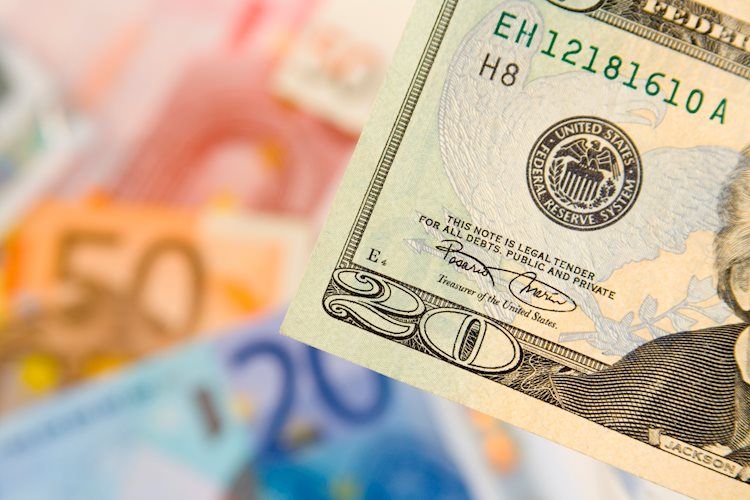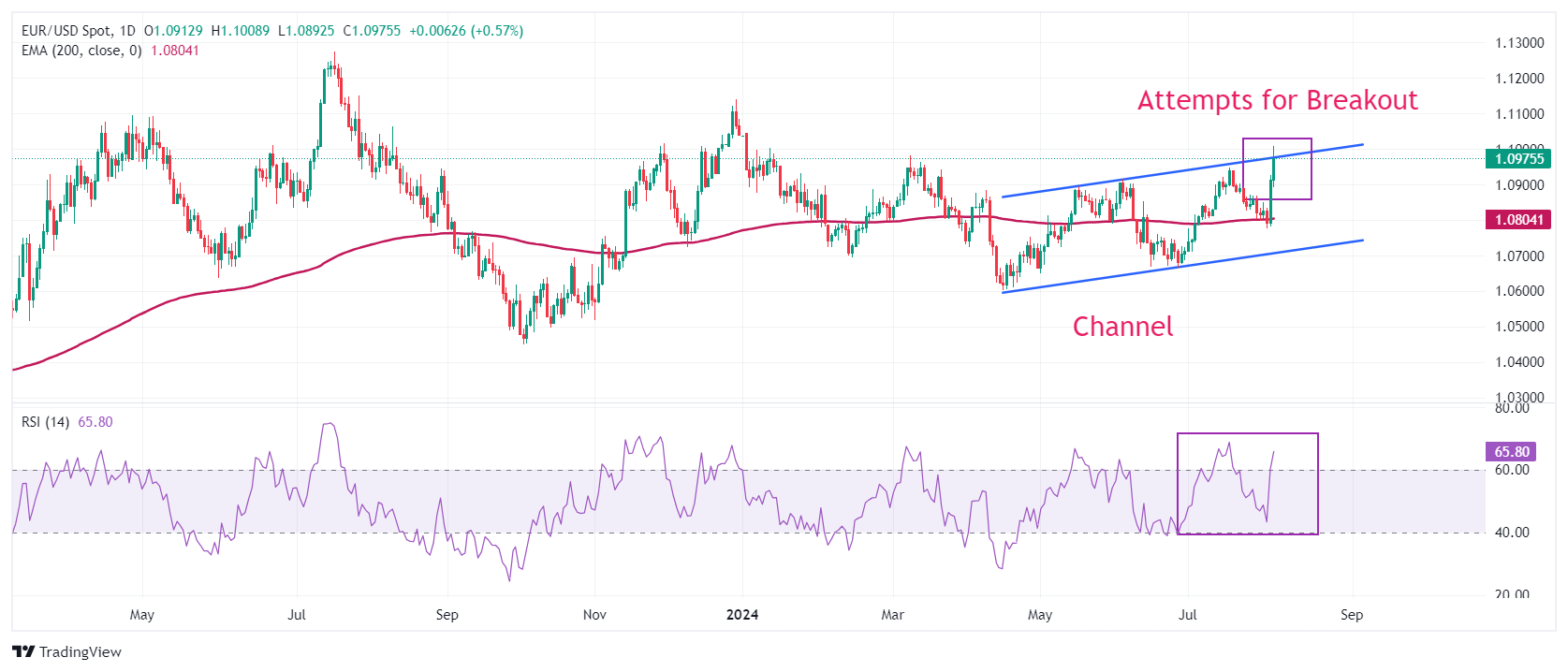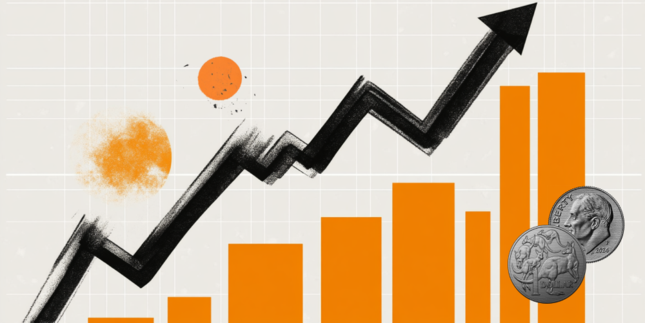EUR/USD Price Analysis: Posts fresh seven-month high near 1.1000
- EUR/USD jumps to near 1.1000 as the US Dollar plunges on fears of US economic slowdown.
- Upbeat US ISM Services PMI offer support to the US Dollar.
- Stubborn Eurozone inflation has diminished market expectation for ECB subsequent rate cuts.
The EUR/USD pair prints a fresh seven-month high around the psychological resistance of 1.1000 in Monday’s American session. The major currency pair strengthens as the US Dollar (USD) plummets amid growing speculation that the Federal Reserve (Fed) could announce emergency rate cuts as risks have widened to both components of dual mandate.
The US Dollar Index (DXY), which tracks the Greenback’s value against six major currencies, plunges to 102.20. Meanwhile, an asset-specific action has observed in global markets. Global equities continue to face sell-off, while risk-perceived currencies have bounced back strongly due to weakness in the US Dollar.
However, the US Dollar has found an intermediate support after upbeat US ISM Services PMI. The PMI report showed that the service sector activity rose to 51.4 from expectations of 51.0 from the former release of 48.8.
Upside risks to United States (US) economic slowdown have deepened as job demand has slowed and the jobless rate has risen to its highest since November 2021.
On the Eurozone front, stubborn inflationary pressures in July have stemmed doubts over expectations of subsequent rate cuts by the European Central Bank (ECB).
EUR/USD attempts to deliver a breakout of the Channel formation on a daily timeframe. A breakout of an aforementioned chart pattern results in wider ticks on the upside and heavy volume. The 200-day Exponential Moving Average (EMA) near 1.0800 acted as major support for the Euro bulls.
The 14-day Relative Strength Index (RSI) climbs above 60.00. If the RSI sustains above 60.00, a bullish momentum will trigger.
More upside would appear if the major currency pair breaks above intraday high of 1.1009. This would drive the asset towards 10 August 2023 high at 1.1065, followed by the round-level resistance of 1.1100.
In an alternate scenario, a downside move below August 1 low at 1.0777 would drag the asset towards February low near 1.0700. A breakdown below the latter would expose the asset to June 14 low at 1.0667.
EUR/USD daily chart
Euro FAQs
The Euro is the currency for the 20 European Union countries that belong to the Eurozone. It is the second most heavily traded currency in the world behind the US Dollar. In 2022, it accounted for 31% of all foreign exchange transactions, with an average daily turnover of over $2.2 trillion a day. EUR/USD is the most heavily traded currency pair in the world, accounting for an estimated 30% off all transactions, followed by EUR/JPY (4%), EUR/GBP (3%) and EUR/AUD (2%).
The European Central Bank (ECB) in Frankfurt, Germany, is the reserve bank for the Eurozone. The ECB sets interest rates and manages monetary policy. The ECB’s primary mandate is to maintain price stability, which means either controlling inflation or stimulating growth. Its primary tool is the raising or lowering of interest rates. Relatively high interest rates – or the expectation of higher rates – will usually benefit the Euro and vice versa. The ECB Governing Council makes monetary policy decisions at meetings held eight times a year. Decisions are made by heads of the Eurozone national banks and six permanent members, including the President of the ECB, Christine Lagarde.
Eurozone inflation data, measured by the Harmonized Index of Consumer Prices (HICP), is an important econometric for the Euro. If inflation rises more than expected, especially if above the ECB’s 2% target, it obliges the ECB to raise interest rates to bring it back under control. Relatively high interest rates compared to its counterparts will usually benefit the Euro, as it makes the region more attractive as a place for global investors to park their money.
Data releases gauge the health of the economy and can impact on the Euro. Indicators such as GDP, Manufacturing and Services PMIs, employment, and consumer sentiment surveys can all influence the direction of the single currency. A strong economy is good for the Euro. Not only does it attract more foreign investment but it may encourage the ECB to put up interest rates, which will directly strengthen the Euro. Otherwise, if economic data is weak, the Euro is likely to fall. Economic data for the four largest economies in the euro area (Germany, France, Italy and Spain) are especially significant, as they account for 75% of the Eurozone’s economy.
Another significant data release for the Euro is the Trade Balance. This indicator measures the difference between what a country earns from its exports and what it spends on imports over a given period. If a country produces highly sought after exports then its currency will gain in value purely from the extra demand created from foreign buyers seeking to purchase these goods. Therefore, a positive net Trade Balance strengthens a currency and vice versa for a negative balance.
Forex News
Keep up with the financial markets, know what's happening and what is affecting the markets with our latest market updates. Analyze market movers, trends and build your trading strategies accordingly.














